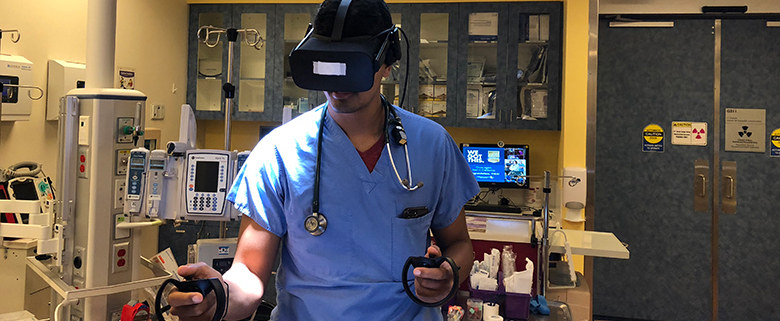The advanced VR simulation expands to new medical institutions as Oculus & CHLA continue their push towards experiential education.
For the past year, medical students and staff at Children’s Hospital Los Angeles (CHLA) have been utilizing VR technology to simulate various high-stakes pediatric emergencies. These immersive training programs create high-stress environments that challenge users to make life-saving decisions under extreme pressure.
The results have proven so successful that Oculus & CHLA will be launching the revolutionary program across eleven new medical facilities and healthcare providers across the U.S.
“Currently, we’re only able to run critical events such as pediatric resuscitation training two to four times per year since we cannot take our teams away from patient care more frequently,” says Kathryn Schaivone (MHA, CHSE) of Kaiser Permanente. “VR levels the playing field in a way that doesn’t happen with in-person methods and provides the flexibility for more frequent participation in simulation.”
Rolling out later this fall, Oculus’ VR medical training program will soon be heading to the following medical facilities: John Hopkins University Health System; Kaiser Permanente Health Network, Southern California; Medical University of Vienna; New York University / Langone Medical Center; Stanford University / Lucile Packard Children’s Hospital; University of Bern; University of Washington, and Yale New Haven Health.

“Much of the research involving VR is still in the very early stages, so it’s incredibly exciting to see such positive results from our work with CHLA and growing interest among healthcare professionals,” says Oculus Head of Public Policy James Hairston. “Thanks to the ease-of-use and portability of Oculus Go, we’re happy to help this cutting-edge pilot program begin to scale and look forward to its future findings.”
Due to many institutions lacking a proper environment for larger PC-based VR setups, Oculus will be donating their Oculus Go standalone VR headset to the above locations for maximum convenience.
“A limitation of many outpatient offices and care centers is lack of space for simulation rooms and simulation centers,” explains principal researcher on the project Dr. Josh Sherman. “Using Oculus Go for our VR modules will allow for on-the-spot training without the need for the extra real estate.”

In addition to the programs expansion to new medical facilities, CHLA will be making VR training a requirement for all incoming residents, as well as an “optional supplement” for existing students.
The VR simulation was created using Unity and was programmed by AiSolve, with additional VFX provided by BioflightVR.
“Now that we have the proof-of-concept, we’re thinking about other skills and medical scenarios that are considered low-frequency, high-stakes within our field and in larger fields such as emergency medicine, critical care, obstetrics,” notes CHLA principal researcher Dr. Todd Chang.
Image Credit: CHLA / Oculus



